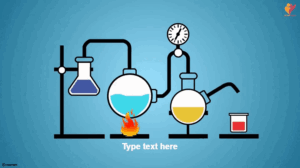Molecules

Molecules are extremely small particles that can be found in every type of material. Atoms, the fundamental constituents of matter, are what they are composed of in their entirety. Chemical bonding is the process through which atoms unite to form molecules. Molecules can consist of as few as two atoms or as many as thousands of atoms bound together, depending on their complexity. In this article, we will break down some of the most difficult ideas concerning molecules and explain them in a way that is easier to grasp.
What Constitutes Each Individual Molecule?
Molecules are indivisible entities that consist of two or more atoms that are chemically connected to one another. The nature of the bonds that hold the molecule together is what determines its properties. Covalent bonding, ionic bonding, and metallic bonding are the three forms of chemical interactions that can occur.
When two atoms combine to form a molecule, a phenomenon known as covalent bonding takes place. Depending on the electronegativity of the atoms that are involved, covalent bonds can either be polar or nonpolar in nature.
When atoms with opposite charges attract one other and create an ionic bond, this phenomenon is referred to as ionic bonding. Salts typically exhibit this form of covalent bonding, which results in a crystalline lattice structure.
The formation of metallic bonds takes place when positively charged metal ions are surrounded by a “sea” of electrons that are not bound to any one location and are therefore free to roam about. The qualities of metals, such as their capacity to conduct electricity, are the result of this form of bonding, which is responsible for the properties of metals.
How do molecules organize themselves?
The structure of a molecule is what determines its characteristics and how it behaves. Both linear and nonlinear structures can be found within molecules.
Linear structures are formed when every atom in the molecule is aligned in a row in the same direction. This particular structure can frequently be seen in molecules, such as carbon dioxide. (CO2).
The presence of nonlinear structures in molecules indicates that their constituent atoms are not aligned in a linear fashion. This particular structure can be found in many molecules, including water. (H2O).
What Kind of Qualities Does a Molecule Possess?
The structure and bonding of a molecule are what decide its characteristics of the molecule. Polarity, solubility, and reactivity are some of the features that should be comprehended thoroughly.
Polarity can be understood as a measurement of how electrical charge is distributed within a molecule. Polar molecules are distinguished from nonpolar molecules by possessing both a positive and a negative end. Because of this feature, the way in which molecules interact with one another and with their surroundings is altered.
The capacity of a molecule to dissolve in a given solvent is referred to as its solubility. Molecules with a polar charge can only be dissolved by other molecules with a polar charge, while molecules with a nonpolar charge can dissolve in nonpolar solvents.
The capacity of a molecule to take part in a chemical reaction is referred to as its reactive potential. This attribute is determined by the sort of bonding that occurs within the molecule as well as its overall structure.



